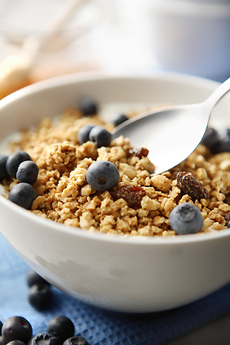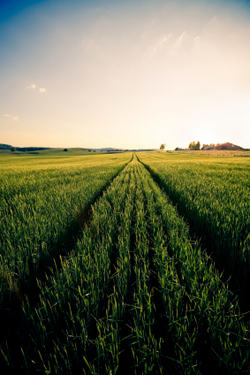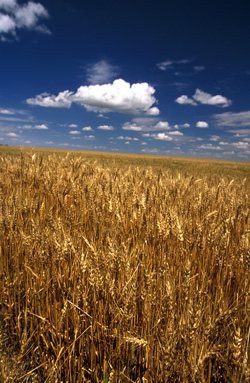Part I A phone call precipitated this article. A couple I know called me to announce that they had, after prolonged discussion, decided that organic foods were the way to go for themselves and their children. To say I was surprised would be an understatement. No one in this household is especially food savvy, and they are not, frankly, the most environmentally-conscious people you’ll ever meet. But I commended them for their decision and asked if there was any way I could help. It turned out that the woman was most concerned about family breakfasts. She wanted her husband and kids to be able to eat organic cereals, but she was uncertain about what was available. And she was quite sure her that kids wouldn’t eat anything that looked “like a bowl of twigs and nuts,” as she put it. I was able to assure my friend that her only problem would be deciding among the great array of organic cereals available. I could even promise her that some of them aren’t necessarily composed of excessively crunchy, indigestible ingredients, as in the 1960s. In fact, there are some terrific organic cereals these days, and many of them are easy to find in natural foods stores and upscale markets. Why Choose Organic Cereal
While conventional agriculture depends upon chemical pesticides, fungicides, and herbicides to control pests, fungi, and weeds, organic agriculture uses insects that counter pests, a focus on plant health, and crop rotation/tractor cultivation to prevent crop losses through these agents. Organic agriculture causes less groundwater contamination/pollution, too. Organic Farming Helps Poor Farmers I am not in favor of genetically-modified (also called genetically-engineered) crops, many of which involve the grains that feed a large percentage of the world’s population. There are a number of reasons for this, but one involves seed saving. For countless generations, farmers, especially poor farmers in lesser-developed countries, saved some of the seeds from one harvest to plant for their next crop. Then, the biotech companies got their GM (genetically-modified) seeds declared as intellectual property, meaning that it is illegal for farmers to save seeds from any GM harvest. Seeds for GM crops must be bought anew for each planting, often perpetuating the debt cycle for poor farmers. Organic agriculture does not permit the use of GM crops, which is an excellent reason to buy organic grains (and the products made from them) all by itself. Organic Farming Preserves Topsoil...And Marine Life
For all of its seeming hardiness, topsoil is very sensitive material. Good topsoil takes a long time to produce, as decomposition (of both plant and animal material as well as of minerals) is a lengthy process. Monoculture practices can strip topsoil of nutrients, so that the crops planted in the soil are not supported. And when crops fail, there is little or no anchor to hold topsoil in its place, so wind or rain can easily pick it up and transport it elsewhere. Poor topsoil can also result in desertification, a process whereby desert is created. According to Wisegeek.com, this is happening in some parts of Africa, Asia, and the midwestern U.S. Farmers continue to practice monoculture in topsoil already stripped of nutrients by continual planting of the same crop, so that more fertilizers, and more complex fertilizers, are necessary for plants to survive. But this is also a vicious circle, both for farmers in debt (they need to keep buying fertilizer) and for the topsoil. When areas of exhausted topsoil are finally abandoned because they simply can’t support plant life any longer, they take many years to return to a fertile state. In the meantime, the topsoil is easily washed or swept away, which can create desert conditions. In addition, runoff from overuse of conventional fertilizers, due to flooding or heavy rains, will flow downstream, eventually reaching the ocean, where its excess of nutrients causes “dead zones”—serious disruption of marine creature populations. Incidentally, clearcutting forested land also results in topsoil depletion. Unlike conventional agriculture, organic agriculture is about soil health and holding on to the topsoil that took so long to become fertile in the first place. Composting, crop rotation, allowing fields to lie fallow and planting nitrogen-fixing cover crops that can decompose into the soil (legumes are often cited as an excellent choice for this) are some of the ways that organic farmers use to enrich topsoil and promote its health. Given that healthy topsoil is so critical to our ability to eat, shouldn’t we support those farmers and manufacturers who support topsoil? Now that you know the environmental issues for choosing organic cereal, let’s take a look at nutrition issues. Continue To Part II: Kids & Organic Cereal Return To Article Index, Above
Recent Articles From Our NutriNibbles™ News Feed:Subscribing notifies you whenever
there are
|

The Nibble Blog
The Latest Products, Recipes & Trends In Specialty Foods
The gourmet guide you’ve been waiting for. New food adventures are served up daily. Check it out!

Food Glossary
Our Food Directories Are "Crash Courses" In Tasty Topics
Your ultimate food lover’s dictionary packed full of information and historical references. Take a look!

Food History
Let the journey begin!
Learn about the history Of 1,000+ Favorite Foods & Beverages Let’s explore the history of your favorie goods together.Let the journey begin!



